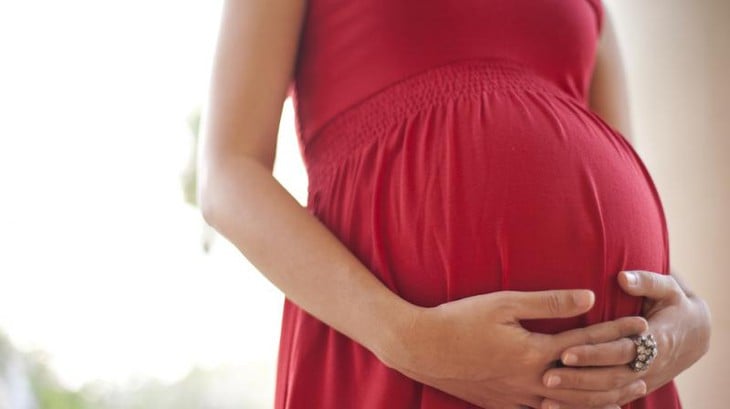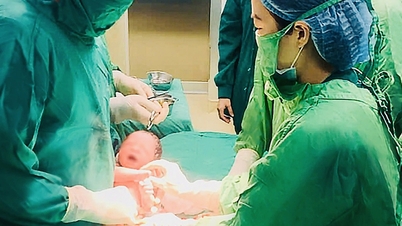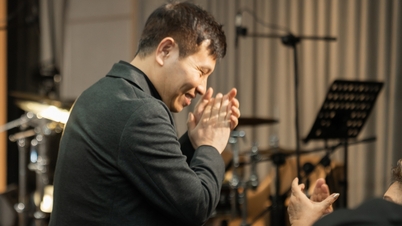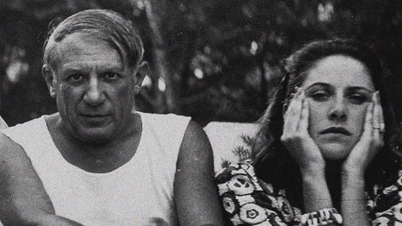
A mother's age at giving birth to her first child can influence the sex of the fetus, according to recent research - Photo: AFP
A new study published in Science Advances suggests that the odds of having a boy or a girl may not be as simple as a coin toss as many people think. Instead, a mother’s biology, specifically her age when she has her first child, may influence the odds.
A team led by reproductive epidemiologist Jorge Chavarro (Harvard TH Chan School of Public Health ) analyzed data from more than 58,000 women in the Nurses' Health Study, which ran from 1956 to 2015. They found an unusually high number of families with all-boys or all-girls, especially in families with three or more children.
Chavarro says each family seems to have a “distinct probability” of having a child of a certain sex. However, at the population level, these probabilities are balanced, so the overall odds are still close to 50-50. But if you look at just the individual or family level, significant bias can emerge.
When behavioral factors such as couples continuing to have children until they had both boys and girls were excluded, the team still found a recurrence of same-sex births, especially among those who started having children later in life.
One hypothesis is that biological changes with age may create an environment more favorable for sperm carrying an X chromosome (giving birth to a girl) or a Y chromosome (giving birth to a boy) to fertilize.
For example, the vaginal environment tends to become more acidic with age, which may favor X sperm – which are larger, live longer and have better protection. Conversely, shortening the time between ovulations with age may allow Y sperm – which are faster but weaker – to reach the egg more easily.
"Gender bias may be due to something that becomes more dominant in individuals as they age," said Chavarro.
The team also discovered two gene variants that are linked to having all boys or all girls. However, these genes are not currently known to be linked to fertility, so their mechanism of action remains a mystery.
Other experts are cautious about the conclusions. Dr. Brendan Zietsch (University of Queensland, Australia) said his study of the entire Swedish population born after 1931 found no signs of a family trend toward having all-boys or all-girls. He said the genetic findings needed to be verified with other independent data.
Chavarro acknowledged the limitations of the study – 95% of the participants were white women in the US – and said more analysis of paternal factors, particularly their age, was needed. He called it a “first draft of a biological explanation” and said there were many avenues for further research .
Source: https://tuoitre.vn/sinh-con-trai-hay-con-gai-co-lien-quan-den-do-tuoi-mang-thai-20250722160353458.htm


![[Photo] Nhan Dan Newspaper displays and solicits comments on the Draft Documents of the 14th National Party Congress](https://vphoto.vietnam.vn/thumb/1200x675/vietnam/resource/IMAGE/2025/10/26/1761470328996_ndo_br_bao-long-171-8916-jpg.webp)

![[Photo] Enjoy the Liuyang Fireworks Festival in Hunan, China](https://vphoto.vietnam.vn/thumb/1200x675/vietnam/resource/IMAGE/2025/10/26/1761463428882_ndo_br_02-1-my-1-jpg.webp)


![[Photo] General Secretary To Lam received the delegation attending the international conference on Vietnam studies](https://vphoto.vietnam.vn/thumb/1200x675/vietnam/resource/IMAGE/2025/10/26/1761456527874_a1-bnd-5260-7947-jpg.webp)





























![[Photo] Prime Minister Pham Minh Chinh attends the opening of the 47th ASEAN Summit](https://vphoto.vietnam.vn/thumb/1200x675/vietnam/resource/IMAGE/2025/10/26/1761452925332_c2a-jpg.webp)







































































Comment (0)